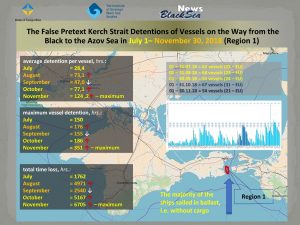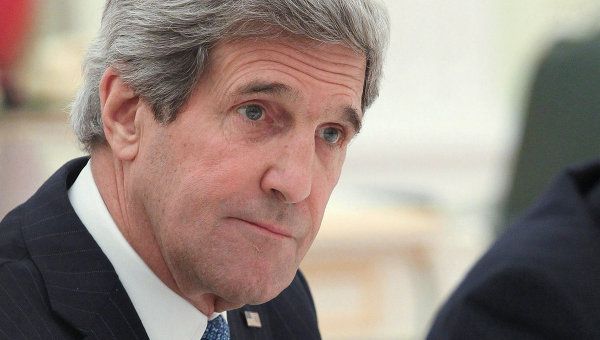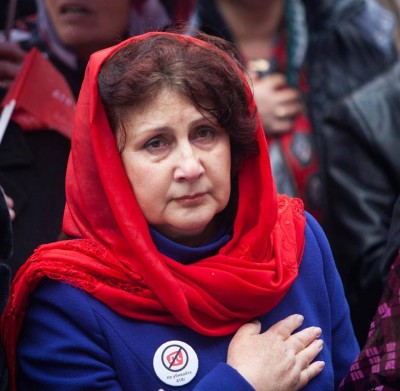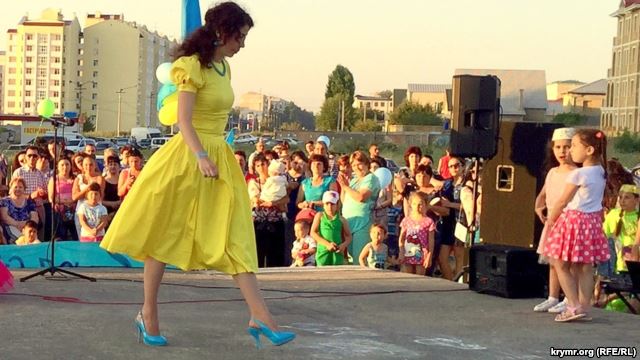The situation in the Azov Sea started aggravating in May 2018, when Russian border guards began detaining merchant ships going to the Ukrainian ports of Mariupol and Berdiansk or back to different countries. The arrests took place in the high seas and in the Kerch Strait. To counter this, the Ukrainian Navy began to transfer their vessels to the Azov Sea. The last attempt to transfer three Ukrainian ships to the Azov Sea ended in Russian border guards seizing them with the use of weapons on 25 November.
TheBabel spoke with Andriy Klymenko, the Head of the Supervisory Board of the "Maidan of Foreign Affairs" Foundation, editor-in-chief of the online media
BlackSeaNews. He has been investigating the situation in the Azov Sea since May 2018. Below is his description of the development of the conflict at the Azov Sea in detail, Russian methods of blockading the ports of Mariupol and Berdiansk, and also he explains the reasons of Russian aggressive policy in the Azov sea and possible consequences for Ukraine.

Timeline of the crisis at the Azov Sea
Russia started spot checking ships in the Kerch Strait on 27 April 2018. Different ships were subjected to these checks. They belonged to different owners, went to Mariupol and Berdiansk and back under various flags. Yet since 17 May, we began to record unusual stops in the middle of the Azov Sea. We contacted people who are engaged in maritime business in Mariupol and Berdiansk, and they contacted the captains of these ships. Thus we learned that those detentions were carried out by boats of the Russian Coast Guard of the Border Guard of the FSB. For that whole period of time [from 17 May to 31 October 2018], we documented 110 such detentions, each is described and added to our database on the BlackSeaNews website.
It was a kind of demonstration. It’s worth mentioning that the Kerch Bridge was opened the day before it all began [16 May 2018]. It was like this: there is a large ship of 150 meters in length, which carries 20,000 tons of cargo, and at night it’s approached by a boat or a ship of the Coastal Guard and through radio contact is requested to stop. And it takes about an hour for such a ship to stop at sea. Then a squad in balaclavas and weapons gets in, the crew is huddled together in the cabin and all their documents are checked. If there are citizens of Ukraine among the crew members of any vessel, then they are definitely asked whether they served in the Armed Forces of Ukraine or participated in the war in the Donbas. And there are several dozens of thousands of Ukrainian sailors who take part in voyages worldwide. The documents of the vessel are checked as well, the cabins of the crew are inspected, like for weapons and explosives. It’s obligatory to inspect the cargo if the ship is loaded or the bridge is empty.
Such arrests in the middle of the Azov Sea lasted all May after the 17th, the whole of June, and there was a peak of 40 detentions in July. At the end of June, the Russian border guards stopped being satisfied with merely stopping vessels in the middle of the sea: somewhere between 25-27 June, they began stopping each ship for inspection in the Kerch Strait, with no exceptions. The point is that the Kerch Strait is a one-way street. For example, first, a caravan of about 20 vessels passes from the southern part of the strait to the northern part towards the Azov Sea, it takes 2-3 hours. And then an oncoming caravan goes, and so it works - in pendulum mode.

In addition to this, a document was filled out - a protocol or an act to indicate that such an inspector carried out an inspection. There was a line printed that the captain of the ship does not have any complaints about the team of inspection and the place for the signature. This explains the fact that the captains do not complain later. Such an inspection procedure began to work in the Kerch Strait from the end of June: both at the entrance to Azov Sea, and at the exit to the Black Sea. It got to the point that in October the average waiting time at the entrance to the Sea of Azov was three days, and at the exit - four. But individual ships were delayed even longer. The highest setback was when a Canadian vessel was detained at the exit to the Black Sea for almost 13 days.
According to all definitions of the UN, such actions are interpreted as "aggression." The definition of the UN accounts for more than twenty indicators of "aggression," including the blockade of ports, which is the case in the Azov Sea.
Economic blockade of Mariupol and Berdiansk
Vessels usually go empty into Mariupol and Berdiansk because they are coming for Ukrainian export products: various types of metal are the main cargo, grain, and some ore and coal. This cargo is taken to the Mediterranean ports of Europe, also supplies go to Canada, the United States, the Middle East, and North Africa. The ships are operated by different countries: about 30% belong to owners from EU countries, 40-50% are from Türkiye, and quite a lot - from the Middle East and North Africa [Lebanon, Egypt, Libya].
Obviously, such actions of Russian border guards don’t make shipowners happy, because they destroy all schedules and terms of contracts. Logistic chains can’t withstand such unpredictable obstacles. For example, the ship should take the steel that has already been brought to the port but comes, let’s say, the seventh day of the month instead of the first. Subsequently, the queues to the berths emerge even despite the fact that the ports of Berdiansk and Mariupol load a ship of several dozens of thousands of tons during the day. In the summer of this year, however, there were no ships in the port of Mariupol for three to four days sometimes.
Due to delays [in the Kerch Strait] at the entrance and exit, delivery to the port of destination is broken, then the following voyages too. One day of aimless staying of one ship at the same place costs $10,000 on average. The shipowners are liable for losses, so they do not want to enter Ukrainian ports. There have already been many refusals, and now it’s a problem to find a fleet willing to go through the Kerch Strait. And this has led to an increase in the cost of freight [in commercial navigation, according to the contract or law, the fee for the carriage of goods or the provision of the vessel for use], as well as the losses for shippers and falling competitiveness of Ukrainian exports.
25% of Ukrainian sea exports go through Mariupol and Berdiansk. Therefore, Russia’s blockade is an element of economic war, since the groundless delays of Ukrainian ships was only increasing month after month.
This leads to an unfavorable socio-economic situation in the region. The situation is especially important in light of the upcoming elections [of the president in March 2019] and because the affected area is the rear of the military operation in the Donbas.

Growth of Russian military presence in the Azov Sea
Since May, Russia has sharply strengthened its military presence in the Azov Sea. The Ukrainian Naval Forces were virtually never present in that area during all the time of the country’s independence until 2018. Only the Mariupol Navy defense squad was and is there. It incorporates 18 units of the fleet, of which only 6 ships and boats carry weapons: one ship has artillery weapons, and boats only carry large-caliber machine guns. All other squads сonsist only of unarmed high-speed boats.
At the moment, Russia has around 100 fleet units in the Azov Sea, counting only the border guards
. Among these, 36 boats and ships have weapons, 24 of which are artillery weapons. Only in October-November [2018], Russia transferred large border ships of the class "Corvette" [a class of combat ships for carrying patrol service, protecting large ships, transport and landing ships] to the Azov Sea . The transfer was completed from the Arkhangelsk, Baltic, and Caspian seas, by inland waterways and rivers [Moscow-River, Volga, Don] to the Azov Sea.
Before this, during the summer, we recorded another transfer - not of border guards, but of small landing ships from the Caspian Flotilla, which take usually one tank and 30 or 50 soldiers. In addition, Rostov-on-Don is located on the Russian coast of the Azov Sea. It contains the headquarters of the Southern Military District of the Russian Federation, from where the management of the war on the Donbas is being conducted. It is the largest and most technically upgraded military district of the Russian Federation. Therefore, already in the summer, the need to strengthen the presence of the Naval Forces of Ukraine began to be discussed. A marines brigade was situated there [on the coastline]. Having been involved in a military operation in the Donbas, it has coastal artillery and some aviation.
World and Ukrainian reactions
The Maidan of Foreign Affairs begun to draw attention to this situation since May 2018. We proposed a package of more than a dozen steps that the Ukrainian government should have made. One of the main ones is to impose sanctions against Russian ports of the Azov and Black Seas because through them, trade with ports of the occupied Crimea, which are subject to various sanctions: European, American, Canadian, etc., has been carried out for almost five years.
For a month and a half [after 17 May], Ukrainian government leaders pretended that nothing terrible was happening, then the reactions came in. At the end of October, the European Parliament adopted a strict resolution, in which, on proposal of Ukraine, the word "sanctions" was mentioned twice. At the same time, the Baltic states, together with Ukraine, adopted a resolution, which directly imposes sanctions against Russian ports. Through the Russian ports of the Azov and Black Seas, a huge grain export of the Russian Federation is conducted: up to one vessel per day, each has three to four thousand tons of grain.
How did the Ukrainian Navy act?
It should be noted that the Ukrainian military responded to our concern very seriously. The Ukrainian and foreign press began to write about the possibility of the economic blockade of Mariupol and Berdiansk serving as a preparation for invasion. Therefore, in September, the Ukrainian Navy transferred two small armored ships with artillery “Lubny” and “Kremenchuk” (the Gyurza-M project) [armored carriers of a slightly larger size with more powerful and modern weapons, designed by the Experimental Design Center for Shipbuilding in Mykolayiv] by land to the Azov Sea.
They showed their effectiveness immediately. The number of arrests of ships at sea by FSB border guards decreased: in September - 8, in October - 2, and in November - none. The reason for the change is that these two Ukrainian boats began to escort merchant ships that went from Mariupol and Berdiansk to the Kerch Strait. There were several incidents where Ukrainian sailors were involved very actively.

Later, at the end of September, two auxiliary ships of the Naval Forces of Ukraine - the ship of management [instead of the headquarters] Donbas and the Marine tug "Korets" - passed from the port of Odesa under the Kerch bridge to the port of Mariupol. They did it very "brazenly," the Russians did not expect this and did not dare to react.

And now [November 25], two more armored boats [Berdiansk and Nikopol] and a tug [Yany Kapu] were to be transferred there. But this time it did not work. The Russians set an old ship under the Kerch Bridge, and by all these maneuvers and ramming, they showed that they would not let in [the Ukrainian Navy cutters]. The Ukrainian boats turned around and headed back to Odesa. It’s obvious that there was a command not to let them out, as they were attacked on the way back at night. The attack was not in the Kerch Strait and not in the 12-mile zone [territorial waters of Ukraine], but in international waters.
Consequences of the incident with the capture of Ukrainian boats
I would evaluate what happened like this. Russia was very scared by the words "sanctions" which began to figure in international decisions on the proposal of Ukraine, not only those of the EU but also those of the US Department of State. Previously, representatives of the Ministry of Foreign Affairs of the Russian Federation declared that they adhere to all the treaties and that, on the contrary, Ukraine is militarizing in the Sea of Azov, but now they themselves have asked for sanctions.
By closing the Strait and preventing the passage of Ukrainian warships, Russia roughly violated the article of the second contract [on the joint use of the Azov Sea], which states that the warships of both countries [Ukraine and Russia] have the right of free passage in the Kerch Strait. At the same time, they also showed their violation of not only the contract but also international maritime conventions. The evidence base for imposing sanctions against Russian seaports [in the Azov and Black Seas] is simply indisputable now. The use of force against Ukrainian ships is an aggravating circumstance.
We have now handed over documentation on this incident to the European Commission and the Military Prosecutor's Office of Ukraine. An example is that old tanker, which Russians put under the Kerch bridge to block the way for Ukrainian boats. That tanker was given the name and number of the IMO [a unique identification number assigned to a seagoing vessel in accordance with the requirements of the International Maritime Organization]. We found this vessel and data about it [NEYMA tanker was in repair at the Kerch Shipyard since January 2017, the Russian firm-owner of Metida is currently in the process of liquidation]. It is necessary to identify the two tugs that have pushed it out. Because the investigations require a clear evidence base, concrete facts.






